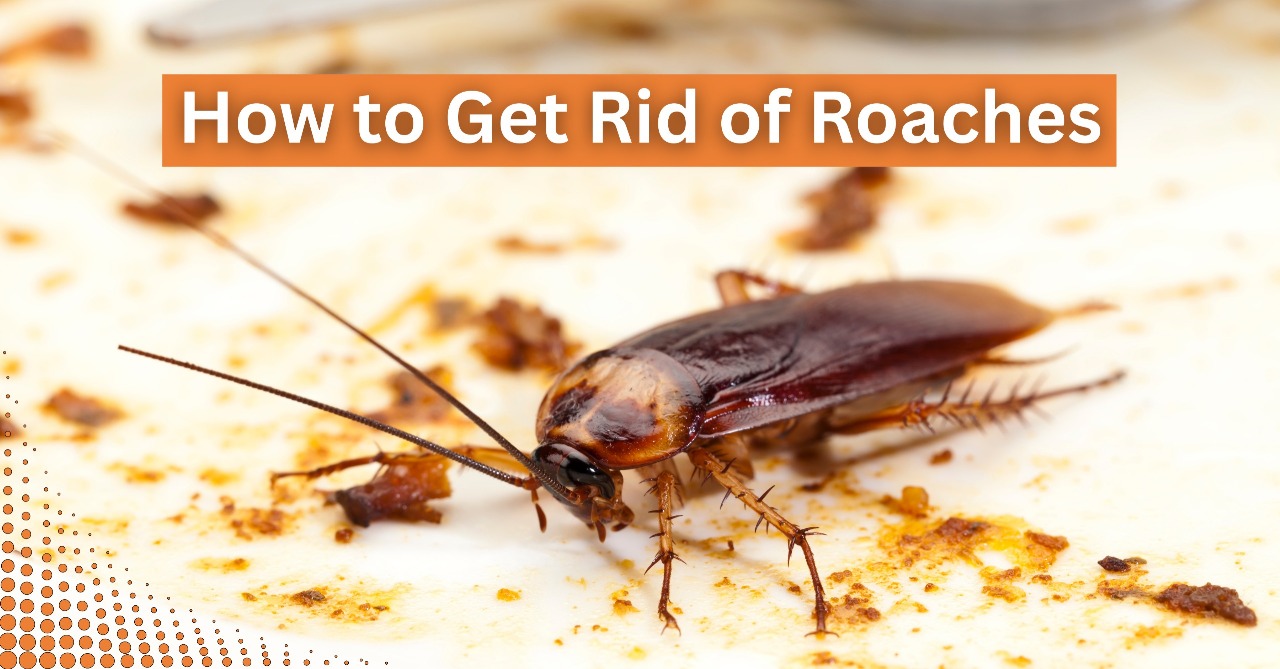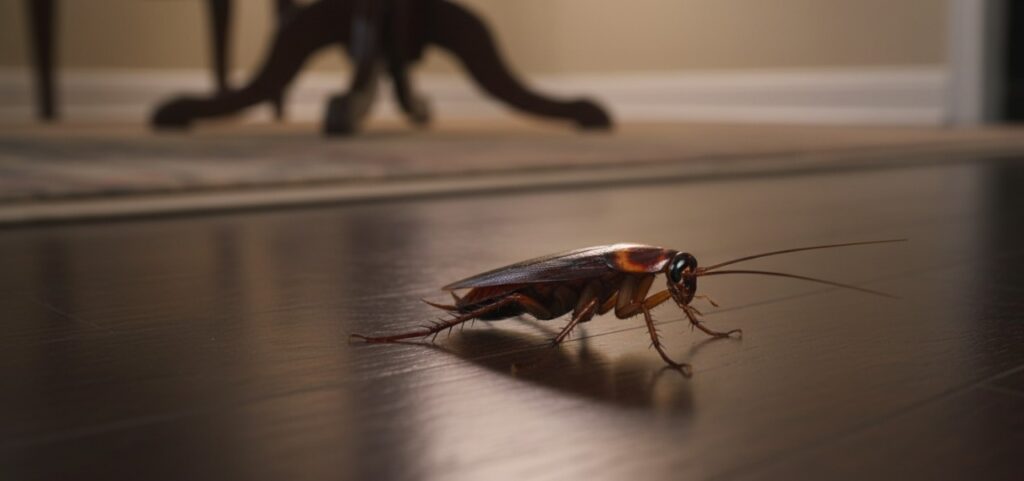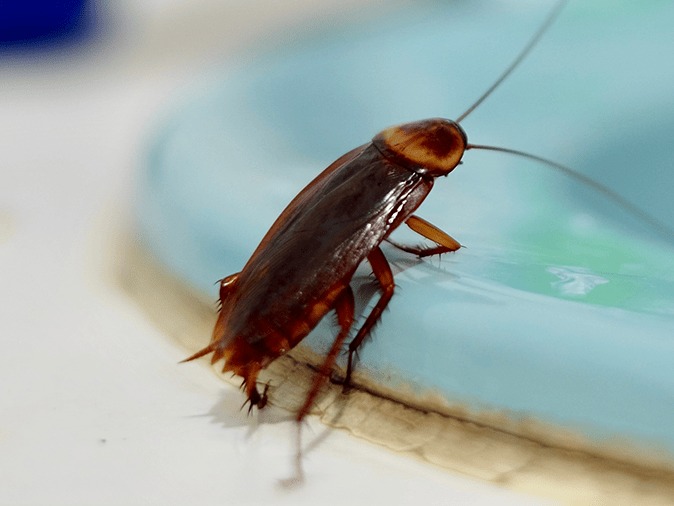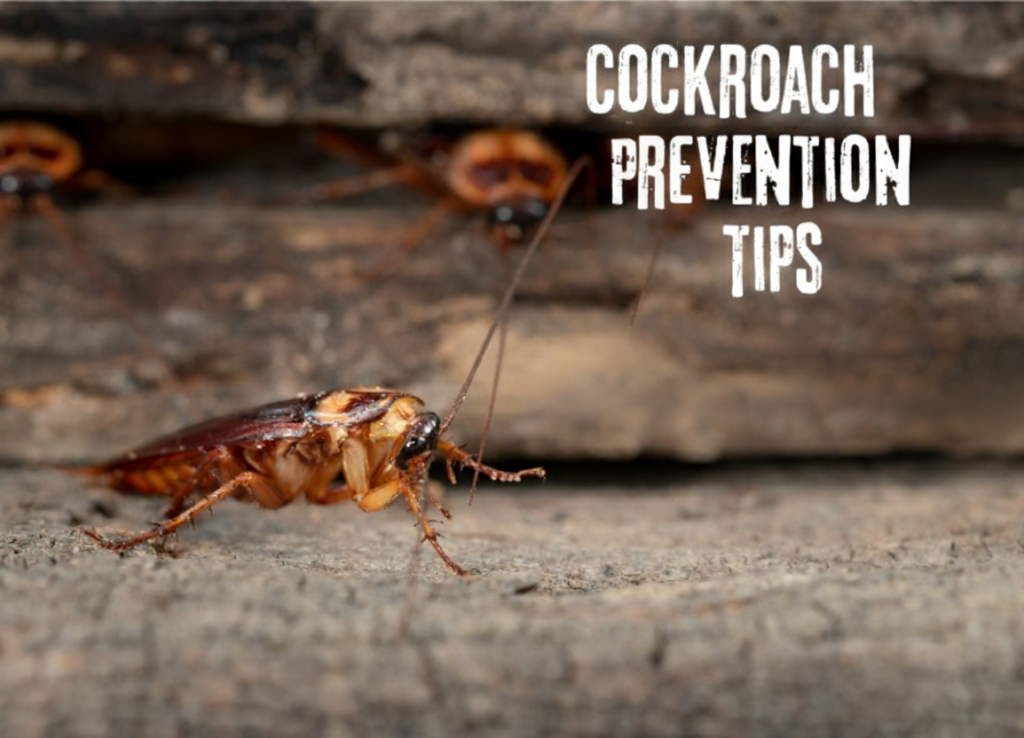
How to Get Rid of Roaches
Roaches are stubborn, fast-breeding pests, but you can learn how to get rid of roaches safely and effectively with a few proven steps. You’ll find what attracts them, how to identify the signs, and the best DIY methods (from gel baits and traps to boric acid and diatomaceous earth), plus when it’s time to call a professional.
The advice applies to homes across the U.S., with additional notes for Illinois homeowners who experience a spike in activity during warm, humid months and in multi-unit buildings. Ready to reclaim your kitchen and bathroom? Start with the simple fixes below, then layer in targeted treatments for lasting results.
What Attracts Cockroaches &Food, Water, Shelter (crumbs, pet food, leaks, dark warm spots)
- Food: Crumbs, grease film, uncovered trash, dirty recyclables, and pet food left out overnight are prime attractants. Wipe stovetops, degrease range hoods, rinse containers before binning, and store dry goods in sealed containers.
- Water: Leaks, condensation on pipes, wet mops, and overflowing drip trays keep roaches close. Fix faucet drips, insulate sweating pipes, and dry sink basins at night.
- Shelter: Roaches love dark, warm spots under appliances, inside cabinet voids, behind baseboards, and around motor housings (fridge, dishwasher). Reduce clutter, install door sweeps, and use sticky monitors to reveal active routes.
Illinois note: summer humidity and older building stock can increase moisture availability, and harborages stay extra vigilant about leaks and kitchen/bath ventilation. Why You Might Have an Infestation
Roaches go where survival is easy: steady food, reliable water, warm shelter, and safe hiding places. If even one of these is abundant, populations can explode, especially in warm months and multi-unit buildings.
Entry Points & Hidden Spots (cracks, floor drains, gaps)
- Entry points: Seal cracks and crevices, gaps around utility penetrations (gas, water, cable), and door thresholds. Use silicone/latex caulk for gaps and steel wool + sealant for larger openings.
- Hidden spots: Check floor drains, wall voids behind plumbing, kickplates under cabinets, and voids near refrigerators and stoves. Place gel bait and bait stations just outside these harborages (not deep inside), and supplement with diatomaceous earth in dry, out-of-reach areas.
Ready for roach infestation treatment for good?
Types of Cockroaches
Not all roaches are the same, and knowing which kind you’re dealing with makes treatment much more effective. Across the U.S., a few species cause most home infestations, and several are widespread in Illinois due to the region’s mix of humid summers and older housing structures. Some common types of cockroaches are:

German Cockroach
German cockroaches are the most common household species. They are small, light brown, and extremely fast. They prefer warm, moist areas like kitchens and bathrooms, where they hide behind appliances and under sinks. Because they breed quickly, even a few roaches can quickly turn into a large infestation.

American Cockroach
Also known as “palmetto bugs,” these reddish-brown roaches are larger and often found in basements, crawl spaces, and drains. They can fly short distances and usually enter from outdoors, especially during hot weather. Their presence often points to moisture problems or cracks around utility lines.

Oriental Cockroach
Sometimes called “water bugs,” Oriental cockroaches thrive in damp, dark spaces such as basements and floor drains. They move more slowly than other species but emit a strong, musty odor. They’re common in older apartment buildings and commercial spaces across Illinois.

Brown-Banded Cockroach
Smaller and lighter in color, brown-banded cockroaches prefer dry, warm environments, often hiding in furniture, cabinets, or electronic devices. They’re less likely to be found in kitchens or bathrooms, but can spread throughout an entire home.
Knowing your enemy is half the battle. Identifying which species you have helps you choose the right bait, placement, and prevention strategy for faster, longer-lasting results.
Warm, humid summers make Illinois especially prone to German and Oriental roaches. If you’re looking for pest control in Illinois or need cockroach removal in Chicago apartments, reach out to Perfect Pest Control. We’ll handle the problem so you can breathe easy again.
Roach Behavior and the Signs of a Roach Infestation
Understanding how cockroaches live helps you spot and stop them faster. Roaches are nocturnal, hide in tight, warm, humid spaces (behind fridges, under sinks, inside wall voids), and follow food, water, and safe harborages. Early detection comes down to a few tell-tale signs:
Visible roaches (especially at night)
Seeing roaches during the day often signals a large infestation. It means hiding spots are overcrowded. Check kitchens, bathrooms, basements, and utility penetrations first. Use sticky cockroach traps near suspected travel paths to confirm activity.
Droppings
Roach droppings look like fine black pepper or coffee grounds (small species) or small, dark cylinders (larger species). You’ll find them along baseboards, in cabinet corners, and under appliances, classic “highways” you should target with gel bait and cleaning.
Shed skins
As nymphs grow, they shed skins (exuviae). Piles of skins near warm appliances, under sinks, or in pantry corners indicate established harborages. Vacuum these areas and place bait stations just outside the harborage, not inside it.
Allergy symptoms
Cockroach allergens (from droppings, skins, and saliva) can trigger allergy symptoms and asthma, especially in kids. If symptoms spike at home, intensify sanitation, vacuum with a HEPA filter, and combine integrated pest management with targeted baiting.
Unpleasant odor
A strong, musty odor often accompanies heavy infestations, most common with German roaches. This smell hangs around pantry gaps, under-sink cabinets, and around trash areas. Deodorizing alone won’t help; remove the source with proper sanitation and bait placement.
According to the EPA and CDC, cockroach allergens found in feces, shed skins, and saliva can trigger asthma and allergy symptoms, especially in children. Keeping surfaces clean and reducing humidity are essential first steps in control.
Tip: In Illinois (and much of the Midwest), humidity and multi-unit buildings can amplify these signs in summer. Prioritize moisture control, sealing cracks, and monitoring in kitchens/baths.
DIY and Home Remedies for Roaches | How to Get Rid of Cockroaches
If you’ve spotted roaches, acting fast makes all the difference. DIY methods can handle small infestations or serve as early control before calling a professional. Some remedies truly help; others mostly waste time. Here’s what actually works and what doesn’t.
Roach Foggers (“Bug Bombs”)
Pros: Easy to use and gives a sense of immediate action.
Cons: Largely ineffective long-term. Foggers don’t reach hidden harborages and may scatter roaches deeper into walls. Only use if you can’t access infested zones directly, and always follow label safety.
Electronic Repellents
Ultrasonic plug-ins claim to repel roaches with sound waves, but research shows little to no measurable effect. Skip these and focus on physical and chemical control instead.
Cockroach Traps
Sticky traps are inexpensive monitors. Place them near baseboards, under sinks, and behind appliances to gauge activity. They won’t eliminate an infestation, but are critical for tracking progress and spotting high-traffic routes for bait placement.
Vinegar
Vinegar helps clean grease and food residue, reducing attraction, but it doesn’t kill roaches. Use it as a sanitation tool, not a treatment.
Baking Soda
Mixed with sugar, baking soda can kill a few roaches when ingested. Results vary, and it’s best as a supportive, low-toxicity DIY remedy rather than a standalone fix.
Borax
Effective when dry and ingested, borax dehydrates roaches internally. Lightly dust behind appliances, under sinks, and along baseboards where pets and children can’t reach. Don’t overapply; a thin layer works better.
Diatomaceous Earth (DE)
A top natural method. DE’s microscopic edges damage the roach’s exoskeleton, causing dehydration. Apply in dry, undisturbed areas such as under refrigerators, dishwashers, and behind cabinets. Avoid wet or greasy surfaces, as it stops working when clumped.
Boric Acid
One of the most effective DIY options. Sprinkle a light dusting in corners, under appliances, and along travel paths. Roaches groom themselves and ingest the powder. Combine with baiting and sanitation for best results.Illinois note: In older Illinois homes, prioritize sealing around radiators, floor penetrations, and floor drains so children and pets aren’t exposed to open dust lines.
Do Home Remedies for Roaches Work?
DIY and natural remedies can help with early or mild infestations, but lasting control depends on cleanliness, placement, and infestation size.
When They Work
- Best for small, recent infestations—few roaches, no odor, limited droppings.
- Use boric acid or diatomaceous earth (DE) in thin layers along baseboards, under sinks, and behind appliances.
- Clean, dry, and declutter before applying baits or dusts.
- Monitor weekly with sticky traps to adjust placement.
- Most effective in spring and early summer when roaches start nesting indoors.
When They Don’t
- Ineffective for deep or multi-unit infestations in shared walls or drains.
- Reinfestation can occur from neighboring units.
- Resistance reduces over-the-counter gel effectiveness.
- Health risks from misuse of DIY dusts.
That’s where professional intervention becomes the smarter, safer option.
When to Call the Professionals for Roach Treatment
DIY is great for small, contained problems. If any of the signs below show up, it’s time to bring in a licensed pro like Perfect Pest Control so you don’t waste weeks while the infestation grows.
Signs You Need Pro Help (large infestation, multi-unit dwelling, persistent after DIY)
- Daytime sightings of roaches in multiple rooms. Overcrowded harborages push roaches into the open, a classic sign of a larger infestation.
- Strong, musty odor; heavy droppings or shed skins. Indicates established colonies (often German cockroaches).
- Activity returning after 2–3 weeks of DIY. Bait avoidance, poor access to harborages, or resistance may be at play.
- Multi-unit housing (apartments/condos). Roaches migrate through shared walls, pipe chases, and floor drains. Unit-only treatment rarely holds.
- Sensitive environments. Homes with children, pets, the elderly, or asthma/allergy concerns benefit from a professionally managed plan.
Illinois note: Older buildings and humid summers can speed up breeding and spread; pro inspection helps spot hidden moisture and structural entry points.
If you’re seeing these signs or DIY hasn’t moved the needle, consider professional help.
Perfect Pest Control serves Illinois with child and pet-friendly cockroach treatments: targeted inspection, precision baiting + IGRs, exclusion, and scheduled follow-ups to keep roaches from bouncing back.
Cockroach Prevention Tips: How to Keep Roaches Away for Good

Once roaches are gone, prevention keeps them from returning. A few smart habits make your home far less inviting.
Seal Entry Points
- Seal cracks, crevices, and gaps around plumbing and baseboards with silicone caulk.
- Add door sweeps, repair window screens, and cover floor drains.
- In older Illinois homes, pay extra attention to kitchens and basements to block re-entry.
Reduce Moisture
- Fix leaks and dripping faucets; run fans in kitchens and baths.
- Use a dehumidifier in damp basements and insulate sweating pipes.
- Perfect Pest Control techs often find hidden leaks; sealing and drying them improves long-term results.
Keep It Clean
- Wipe counters, sweep nightly, and store food in airtight containers.
- Empty trash often and rinse recyclables.
- Clean before baiting; a spotless kitchen is hostile to roaches.
Monitor & Maintain
- Use sticky traps behind appliances and under the sink.
- Refresh baits every 2–4 weeks and track sightings.
- Schedule periodic professional inspections, especially in humid Illinois months.
- Perfect Pest Control offers year-round maintenance for lasting protection.
Rotate Treatments
- Alternate bait ingredients to prevent resistance.
- Avoid overusing sprays or foggers; pair IGRs with baiting for complete control.
- Call a professional if the activity returns; they can reset your treatment safely.
Conclusion
Roaches multiply fast, but with smart prevention and quick action, you can stop them before they spread.
Keep your kitchen and bathroom spotless, seal entry points, and treat early for best results.
For safe, long-term protection, trust Perfect Pest Control your local experts in roach elimination.
FAQs
Use gel bait placed along travel paths (under sinks, behind appliances, along baseboards), then add sticky traps to monitor. Clean first so bait beats food scraps. Seal entry points the same day.
Contact sprays can knock down on sight, but they don’t fix the hidden colony. For elimination, rely on baits + targeted dusts (boric acid/DE) and sanitation.
They can for small, contained problems. Boric acid and diatomaceous earth help when applied thinly in dry, protected edges. Vinegar cleans (doesn’t kill). Pair DIY with cleaning, sealing, and monitoring.
Both work differently; many homes use both.
Boric acid: kills when ingested (great near bait routes).
DE: damages exoskeleton on contact (best in dry, undisturbed edges).
Keep layers paper-thin; thick piles cause avoidance.
Evidence shows little to no reliable effect. Spend your budget on baits, traps, sealing, and moisture control.
Gel bait: Along edges and corners, roaches travel—cabinet hinges, under sinks, behind fridge/stove, near utility penetrations.
Traps: At baseboards, beside trash, under appliances, near floor drains. Check weekly and reposition toward higher catches.
Small infestations: 7–14 days to see a major decline. Moderate: 3–4 weeks with bait refresh + sealing. Heavy/multi-room: plan professional treatment with follow-ups.
Food, water, shelter: crumbs/grease, pet food, leaks/condensation, clutter, and warm motor housings (fridge/dishwasher). Fix leaks, store food in an airtight container, and declutter.
Night activity, pepper-like droppings, shed skins, egg cases (oothecae), a musty odor, and smear marks along baseboards.
Treat your unit and block migration: seal around pipes, install drain screens, and coordinate with management for building-wide baiting. DIY alone struggles if neighbors aren’t treated.
Focus on sink cabinets, appliance gaps, and floor/wall penetrations. Clean first, bait second, dust thinly in dry edges (not on food-prep surfaces), and keep the areas dry.
Take your kitchen and bathroom back, starting today.
Get a targeted cockroach plan that combines inspection, precision baiting + IGRs, exclusion, and scheduled follow-ups safe for families and pets, effective for apartments and single-family homes alike.
Book your inspection now and see measurable results in weeks, not months

